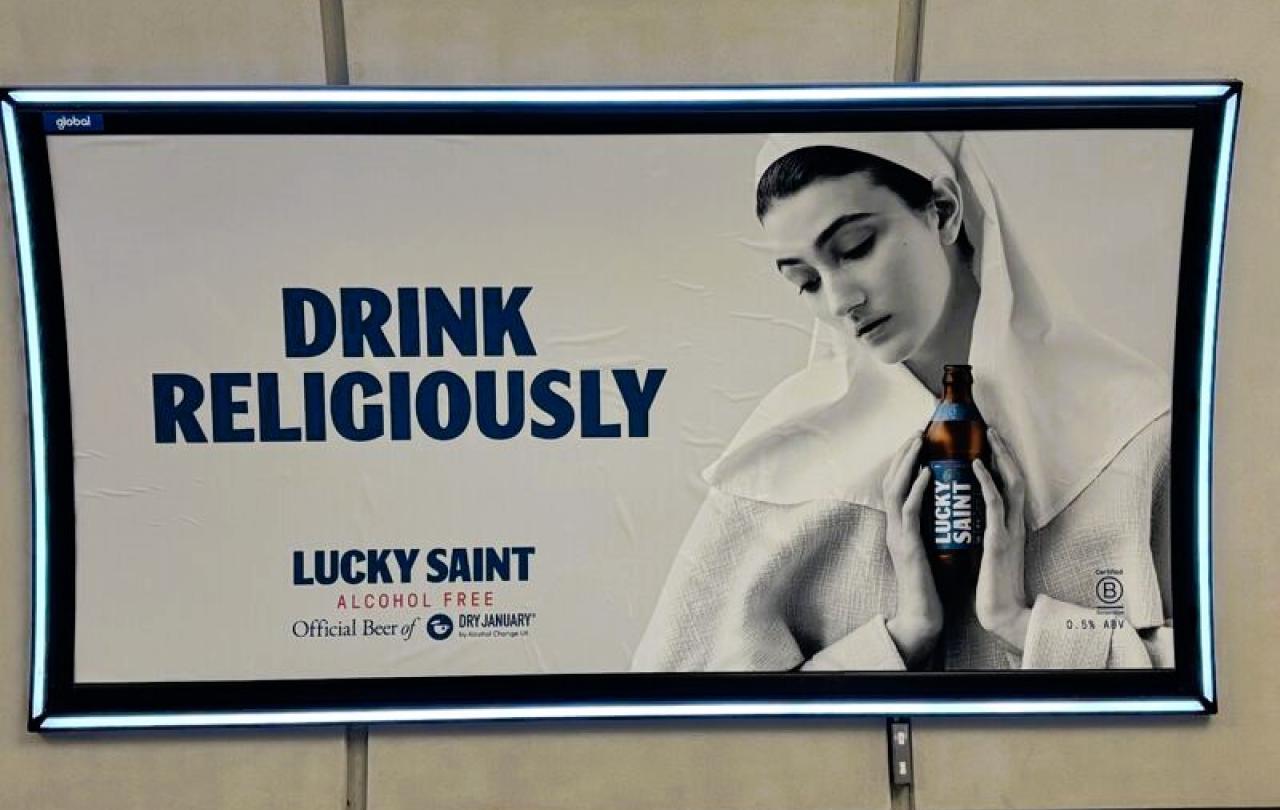
On a recent trip across London, I was slightly surprised to be exhorted multiple times to “Drink Religiously.” For those of you, like me, not from the capital, this is an ad campaign for Lucky Saint non-alcoholic beer. It features an image of a nun in a classically pious pose, cradling in her hands a bottle of the apparently blessed brew.
Further research (by which I mean a quick Google search), revealed the beer is a new arrival on the scene, and is the “official” beer of dry January. And the name? Well the website claims it is “a wry nod to the virtuousness of drinking alcohol-free.”
Christian nerd that I am, this ad got me thinking. What should we make of the suggestion to “drink religiously”?
Well firstly using the imagery of religion to advertise beer feels a little new. Doing things “religiously” has not tended to be seen as a positive, and so it hasn’t been a key part of the advertising strategy of brewers: an advert that tells you to drink sinfully sounds a lot more plausible. Maybe this is over-reading things, but the ad is emblematic of what we are increasingly observing – our culture feels more open to God, or at least to religion, than it was. Even if all we do with that openness is sell stuff.
That said, the ad also works because it assumes we all know what religion is, so much so that we know what “drinking religiously” would involve. Religion, in the language of the ad, is concerned with moral uprightness. Obviously religious people, if they are going to drink, are going to drink alcohol free beer, because we all know that alcohol is morally bad, or so the implied argument goes. They even use that rather unfashionable word virtue. There’s more than a hint on the website that drinking this beer makes you just a little bit better than everyone else.
But what might Christian religious drinking be? Well, I can only speak for myself, but the ad made me think about Communion – that strange moment in church services where Christians drink wine to remember, and somehow partake in, Jesus’ blood.
Now, Communion is an incredibly rich topic and has layer upon layer of meaning. But one thing we remember as we eat bread and sip wine, is that we are precisely not better than other people. That to be “religious”, or better still to be Christian, is not to be more virtuous than others, if anything it is to be more aware of our need.
When we come to take Communion, we come with empty hands, and are fed. We come acknowledging not our luck but our weakness, and are given drink. We come with our need and are met by the God who gives us more than we can imagine, because he gives himself.
What might it mean to “drink religiously”?
Call me a cynic, but I think it might be something other than just enjoying the taste of beer without risking a hangover.
Perhaps it might mean to meet with Jesus Christ in a sip of wine on a Sunday morning.
But then I haven’t actually tried Lucky Saint, so who knows, maybe drinking it really is a religious experience.
Cheers.




